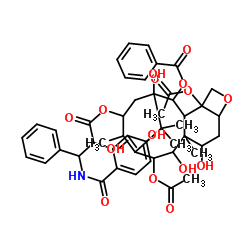胆固醇酯酶 来源于猪胰腺

胆固醇酯酶 来源于猪胰腺结构式

|
常用名 | 胆固醇酯酶 来源于猪胰腺 | 英文名 | Cholesterol esterase |
|---|---|---|---|---|
| CAS号 | 9026-00-0 | 分子量 | 871.921 | |
| 密度 | 1.4±0.1 g/cm3 | 沸点 | 982.8±65.0 °C at 760 mmHg | |
| 分子式 | C47H53NO15 | 熔点 | N/A | |
| MSDS | 美版 | 闪点 | 548.2±34.3 °C |
胆固醇酯酶 来源于猪胰腺用途胆固醇酯酶是一种将胆固醇酯水解成胆固醇和肠腔内游离脂肪酸的酶。胆固醇在腺泡细胞中合成并储存在发酵原颗粒中。胆固醇酯酶也称为胆盐刺激脂酶和羧基酯脂酶,起到加速胆固醇吸收的作用[1][2]。 |
| 中文名 | 胆固醇酯酶 |
|---|---|
| 英文名 | Esterase cholesterol |
| 英文别名 | 更多 |
| 描述 | 胆固醇酯酶是一种将胆固醇酯水解成胆固醇和肠腔内游离脂肪酸的酶。胆固醇在腺泡细胞中合成并储存在发酵原颗粒中。胆固醇酯酶也称为胆盐刺激脂酶和羧基酯脂酶,起到加速胆固醇吸收的作用[1][2]。 |
|---|---|
| 相关类别 | |
| 参考文献 |
| 密度 | 1.4±0.1 g/cm3 |
|---|---|
| 沸点 | 982.8±65.0 °C at 760 mmHg |
| 分子式 | C47H53NO15 |
| 分子量 | 871.921 |
| 闪点 | 548.2±34.3 °C |
| 精确质量 | 871.341492 |
| LogP | 5.68 |
| 外观性状 | powder | white |
| 蒸汽压 | 0.0±0.3 mmHg at 25°C |
| 折射率 | 1.651 |
| 储存条件 | -20°C密闭,避光,通风干燥处 |
| 稳定性 | Analysis Note Protein determined by biuret. Other Notes Contains potassium phosphate buffer salts and stabilizer. Unit Definition One unit will hydrolyze 1.0 μmole of cholesteryl oleate to cholesterol and oleic acid per min at pH 7.0 at 37 °C in the presence of taurocholate. |
| 水溶解性 | Dissolve 1mg/ml in 0.1M phosphate buffer, pH 6.0 to 7.0 |
| 计算化学 | 计算化学数据: 1、 疏水参数计算参考值(XlogP):3.5 2、 氢键供体数量:0 3、 氢键受体数量:3 4、 可旋转化学键数量:1 5、 拓扑分子极性表面积(TPSA):35.3 6、 重原子数量:19 7、 表面电荷:0 8、 复杂度:335 9、 同位素原子数量:0 10、 确定原子立构中心数量:0 11、 不确定原子立构中心数量:0 12、 确定化学键立构中心数量:0 13、 不确定化学键立构中心数量:0 14、 共价键单元数量:1 |
| 更多 | 1. 性状:白色粉末。 2. 密度(g/mL,25℃):未确定 3. 相对蒸汽密度(g/mL,空气=1):未确定 4. 熔点(ºC):未确定 5. 沸点(ºC,常压):未确定 6. 沸点(ºC,5.2kPa):未确定 7. 折射率:未确定 8. 闪点(ºC):未确定 9. 比旋光度(º):未确定 10. 自燃点或引燃温度(ºC):未确定 11. 蒸气压(kPa,20ºC):未确定 12. 饱和蒸气压(kPa,60ºC):未确定 13. 燃烧热(KJ/mol):未确定 14. 临界温度(ºC):未确定 15. 临界压力(KPa):未确定 16. 油水(辛醇/水)分配系数的对数值:未确定 17. 爆炸上限(%,V/V):未确定 18. 爆炸下限(%,V/V):未确定 19. 溶解性:溶于水 |
| 个人防护装备 | Eyeshields;Gloves;type N95 (US);type P1 (EN143) respirator filter |
|---|---|
| 安全声明 (欧洲) | 22-24/25 |
| 危险品运输编码 | NONH for all modes of transport |
| WGK德国 | 3 |
|
Artificial sweeteners stimulate adipogenesis and suppress lipolysis independently of sweet taste receptors.
J. Biol. Chem. 288(45) , 32475-89, (2013) G protein-coupled receptors mediate responses to a myriad of ligands, some of which regulate adipocyte differentiation and metabolism. The sweet taste receptors T1R2 and T1R3 are G protein-coupled rec... |
|
|
Injection of phosphatidylcholine and deoxycholic acid regulates gene expression of lipolysis-related factors, pro-inflammatory cytokines, and hormones on mouse fat tissue.
Food Chem. Toxicol. 60 , 263-8, (2013) Injection of phosphatidylcholine (PC) and deoxycholic acid (DA) preparation is widely used as an alternative to liposuction for the reduction of subcutaneous fat. Nevertheless, its physiological effec... |
|
|
Modest hypoxia significantly reduces triglyceride content and lipid droplet size in 3T3-L1 adipocytes.
Biochem. Biophys. Res. Commun. 440(1) , 43-9, (2013) A previous study has demonstrated that endurance training under hypoxia results in a greater reduction in body fat mass compared to exercise under normoxia. However, the cellular and molecular mechani... |
| Biocatalytics E3 |
| 4,10-Diacetoxy-1,7,9-trihydroxy-13-({2-hydroxy-3-[(4-hydroxybenzoyl)amino]-3-phenylpropanoyl}oxy)-5,20-epoxytax-11-en-2-yl benzoate |
| Bucelipase alfa |
| Bile salt-stimulated lipase |
| MFCD00071052 |
| Benzenepropanoic acid, α-hydroxy-β-[(4-hydroxybenzoyl)amino]-, 6,12b-bis(acetyloxy)-12-(benzoyloxy)-2a,3,4,4a,5,6,9,10,11,12,12a,12b-dodecahydro-4,5,11-trihydroxy-4a,8,13,13-tetramethyl-7,11-me thano-1H-cyclodeca[3,4]benz[1,2-b]oxet-9-yl ester |


